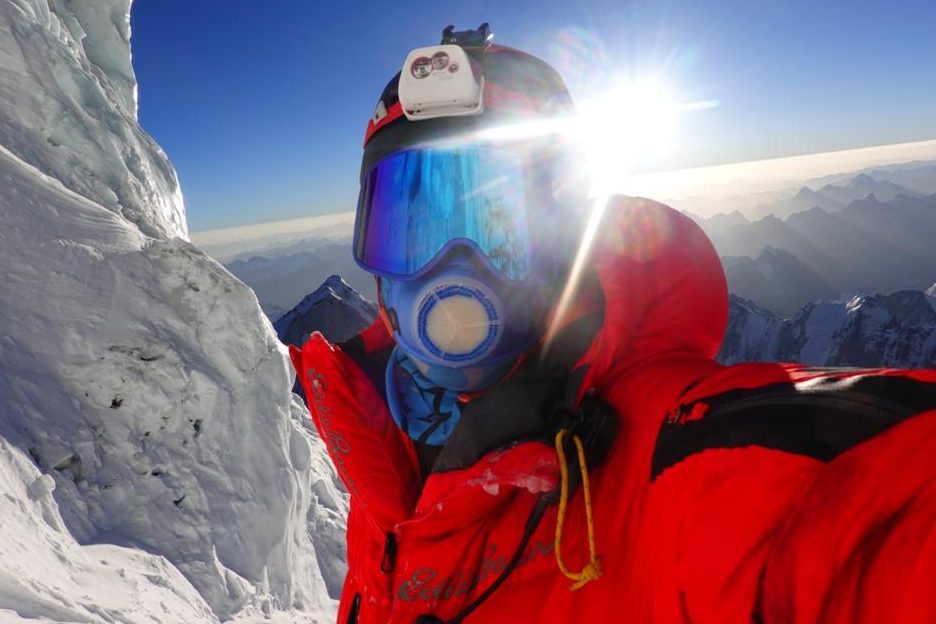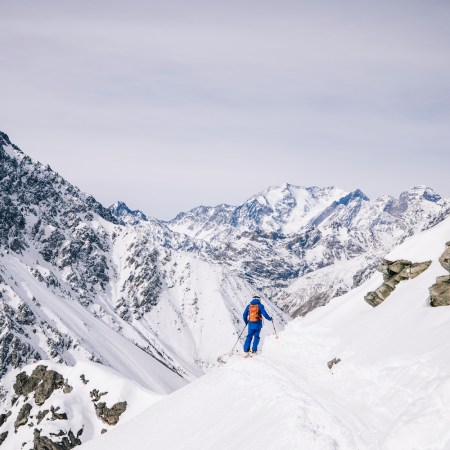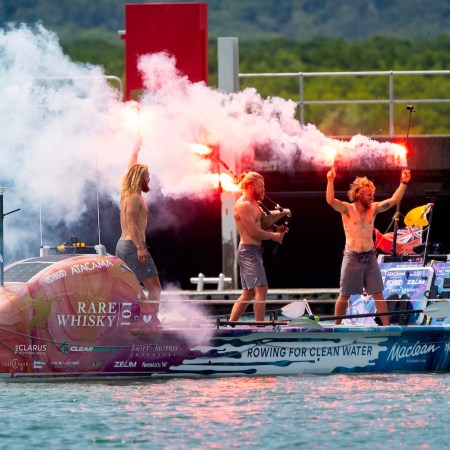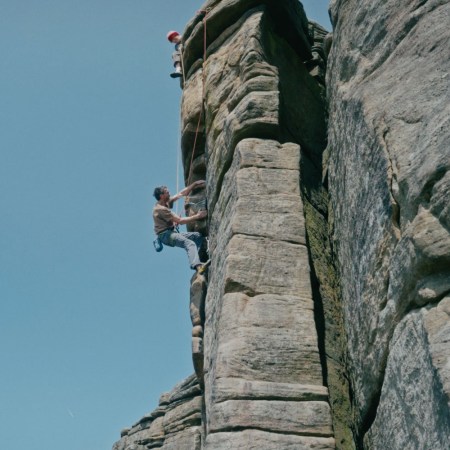Before this year, the list of climbers who had summited both Mount Everest and K2 (nicknamed “Savage Mountain”) had just three Americans on it: Ed Viesturs, Scott Fischer and Steve Swenson.
A fourth name was added to the oxygen-less Everest/K2 list on July 24th when Eddie Bauer mountaineer Adrian Ballinger summited K2 along with his Ecuadorian climbing partner Carla Perez (who became the first Latin American woman to accomplish the same feat).
During the final ascent to the top of K2, in addition to being without oxygen, a nauseous Ballinger didn’t even have a backpack with him and instead carried just a half-liter of water, some energy gels, sunscreen, spare gloves and goggles all stuffed in the pockets of his down climbing suit.
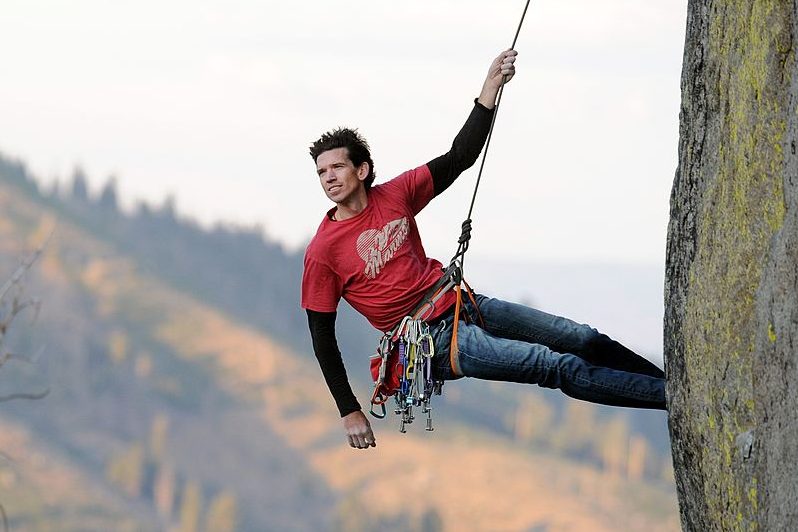
As impressive as making it up both 29,029-foot Everest and 28,251-foot K2 without oxygen is in general, it was even more impressive this year with regard to the latter as avalanches, unpredictable snow slides and bad weather forced nearly 90 percent of the climbers who tried to summit the frigid mountain on the China–Pakistan border to turn back.
“There were about 200 climbers on the mountain between Sherpa and Pakistani high-altitude workers and foreign climbers,” Ballinger, who also guides trips up Everest for his company Alpenglow Expeditions, tells InsideHook. “And 170 or so of them left in that third week of July when conditions looked really dangerous on the mountain with really high avalanche conditions. We were pretty determined to stay and to try to be patient and just give things time. And it worked out.”
Prior to that final ascent by Ballinger, Perez and the other three members of their team (two Nepali Sherpas and one Ecuadorian guide), they had spent the better part of July climbing on the mountain, getting to know the route and acclimatizing (the process of building red blood cells so you can survive at progressively higher altitudes).
The route which 43-year-old Ballinger picked combined both technical rock as well as ice climbing and also required going through something called the Bottleneck, an hourglass-shaped gully with about 50 degrees of steepness.
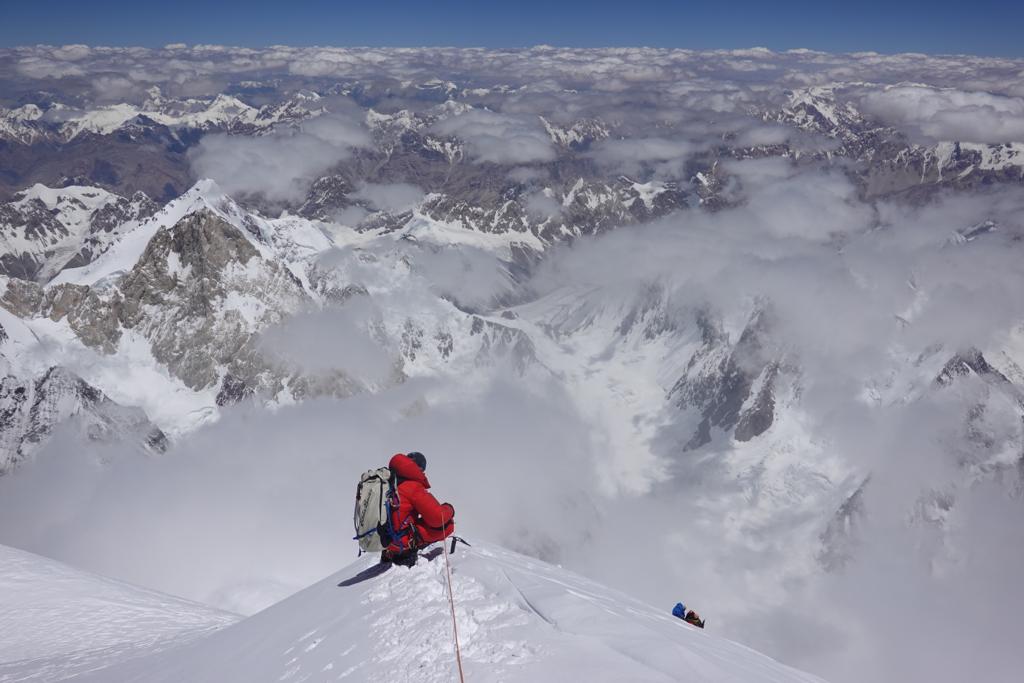
Though it’s regarded as the fastest way to the top of K2, going through the Bottleneck is also the deadliest because there’s a 400-foo-tall icy cliff, called a serac, sitting above it which dropping chunks of ice on a daily basis that are anywhere from the size of a microwave to a small house.
As Ballinger saw firsthand, every single piece of that falling ice has to slide down through the hourglass shape of the Bottleneck.
“This is the type of risk that I personally hate,” Ballinger says. “It’s completely random. It doesn’t matter how talented you are as a climber or how much experience you have. If you’re there the wrong moment of the day, then you get hit by the ice and it kills you. I lost a good friend there in 2008. Just in the past 10 years, there have been 20 deaths there. I knew going into it that it was dangerous and there was a big risk.”
Prior to taking it, Ballinger discussed that risk with his family, girlfriend, and best climbing friends. Ultimately, he decided it was one worth taking.
The thing about big mountains that has inspired me since I was a really young kid is the unknown of the challenge.
Ballinger had plenty of time to ponder whether or not he made the right call as he was under the serac for about six hours because of how slow he was climbing due to the lack of oxygen. (People on oxygen typically climb through the Bottleneck in less than two hours.)
“It was absolutely more dangerous than I thought,” Ballinger says. “You’re walking between blocks that have fallen in the previous days so there’s no doubting whether the thing is dangerous or not, or active or not, because there’s debris all around you. Six hours is a long time to think about your mortality and whether the decision you made was worth it or not. As it worked out, we all got through that day and we’re all still here. But it was a really intense place for me. It was more dangerous than I expected.”
So why did Ballinger opt to make an already potentially deadly climb even more dangerous by doing it sans oxygen?
“The thing about big mountains that has inspired me since I was a really young kid is the unknown of the challenge,” Ballinger says. “That you were going to be forced to push yourself physically, mentally and emotionally beyond your limits and that there was going to be real risk involved. The mountain really could kill you because you are at or beyond your limits. I’m genetically lucky enough that if I climb with supplemental oxygen, I don’t reach those limits. I feel quite comfortable. I can go to a mountain like K2 or Everest and be very confident that I can summit with oxygen and get back down. So I started trying to climb the mountains without supplemental oxygen.”
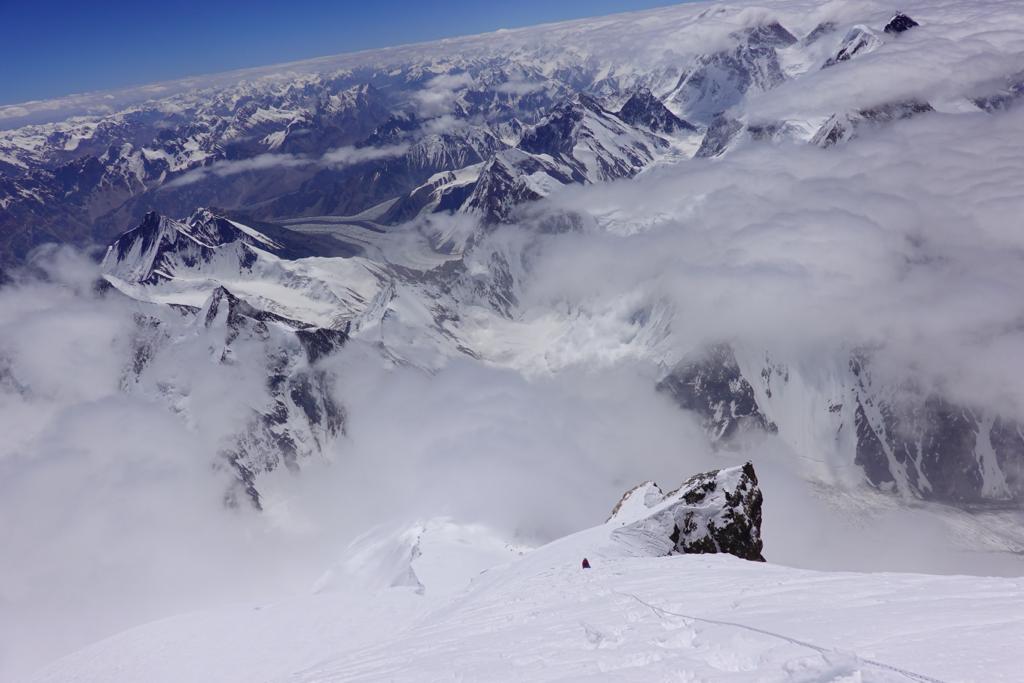
Naturally, after Ballinger was able to conquer Everest, K2 was next.
“Once I summited Everest without oxygen, which took me two years and really pushed me and was an unbelievably difficult thing for me, I was interested in trying the second-tallest mountain,” Ballinger says. “K2 has similar altitude challenges but also added real true technical, technically difficult climbing to the mix.”
Having climbed both, Ballinger is one of only a handful of people who can compare summiting K2 to reaching Everest’s peak.
“Everest is 800 feet higher than K2 and it was really in those last 800 feet that my body and brain were completely destroyed to the point where I was blacked out for more than half of my summit day on Everest,” Ballinger says. “That last 800 feet was the most dangerous and scary thing I’ve ever done. Had I not had a great team around me of Sherpas and friends, I don’t think I’d be having this conversation with you today. It was much, much more difficult, like so much more difficult. It probably took me almost a year to recover physically from that because I had lost so much muscle. I can feel already that won’t be the case with K2. I think it’ll be a matter of three or four months to get back to where I was. With that said, K2 felt more dangerous because of the risks on summit day and the random nature of them.”
Now that Ballinger — who dropped from 148 pounds down to 127 during his K2 trip — is back on the ground and can reflect on his accomplishment, he’s not sure if he’ll ever be going back to the top — at least without oxygen.
“Right now, actually truly looking back at it, I’m not sure it was worth it,” he says. “I was sort of imagining if I got wiped out by a block of ice going under the Bottleneck and ended up on a puffy cloud looking down at the world … I think maybe there’s too much to miss. There’s too much I love in my life and that brief euphoria on the summit of K2, I’m not yet sure whether it’s worth the high risks of not coming home. Over 60 years of climbing since 1950 when K2 was first climbed, one in five people are killed. When you climb without oxygen, that ratio goes up to almost one in two and a half. And those numbers are very real. I’m so proud. I worked so hard for this. But I also recognize how big a part of that success came from luck. And luck is fickle, right?”
The Charge will help you move better, think clearer and stay in the game longer. Subscribe to our wellness newsletter today.
